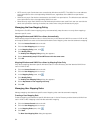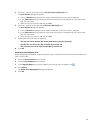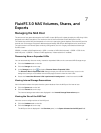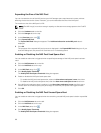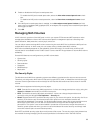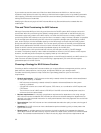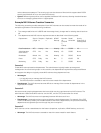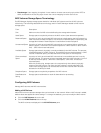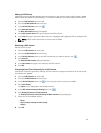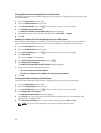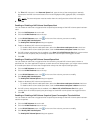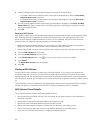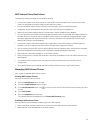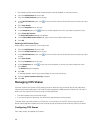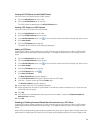
• Disadvantage: User mapping is required. A user needs to choose one security style, either NTFS or
UNIX, and based on the security style chosen the correct mapping for other users is set.
NAS Volumes Storage Space Terminology
FluidFS Manager displays storage space details for individual NAS volumes and for all NAS volumes
collectively. The following table defines terminology used in FluidFS Manager related to NAS volume
storage space.
Term Description
Size
Maximum size of a NAS volume defined by the storage administrator.
Used Space
Storage space occupied by writes to the NAS volume (user data and snapshots).
Reserved Space
A portion of a thin‐provisioned NAS volume that is dedicated to the NAS volume (no
other volumes can take the space). The amount of reserved space is specified by the
storage administrator. Reserved space is used before unreserved space.
Unreserved Space
A portion of a thin‐provisioned NAS volume that is not reserved (other volumes can
take the space). The amount of unreserved space for a NAS volume is: (NAS volume
size) – (NAS volume reserved space).
Available Space
Storage space that is physically currently available for the NAS volume. The amount
of available space for a NAS volume is: (unused NAS volume reserved space) + (NAS
volume unreserved space, provided that there is free space in the NAS pool).
Overcommitted
Space
A portion of a thin‐provisioned NAS volume that is not available and not in use by
the NAS volume. The amount of overcommitted space for a NAS volume is: (sum of
all the NAS volume space) - (NAS Pool: Used Space) - (NAS Pool: Unused (un-
reserved Space).
With thin‐provisioning, storage space is consumed only when data is physically
written to the NAS volume, not when the NAS volume is initially allocated. This
means more storage space can be allocated to the NAS volumes than has been
allocated in the NAS pool itself.
Snapshot Space
Storage space occupied by snapshots of a NAS volume.
Data Reduction
Saving
Storage space reclaimed as a result of data reduction processing.
Configuring NAS Volumes
Manage NAS volumes and NAS volume alerts.
Adding a NAS Volume
Add a NAS volume to allocate storage that can be shared on the network. When a NAS volume is added,
default values are applied for some settings. To change the defaults, you must modify the NAS volume.
1. Click the NAS Volumes tab on the left.
2. Click the All NAS Volumes tab on the top.
The NAS volumes are displayed in the All NAS Volumes pane.
92



